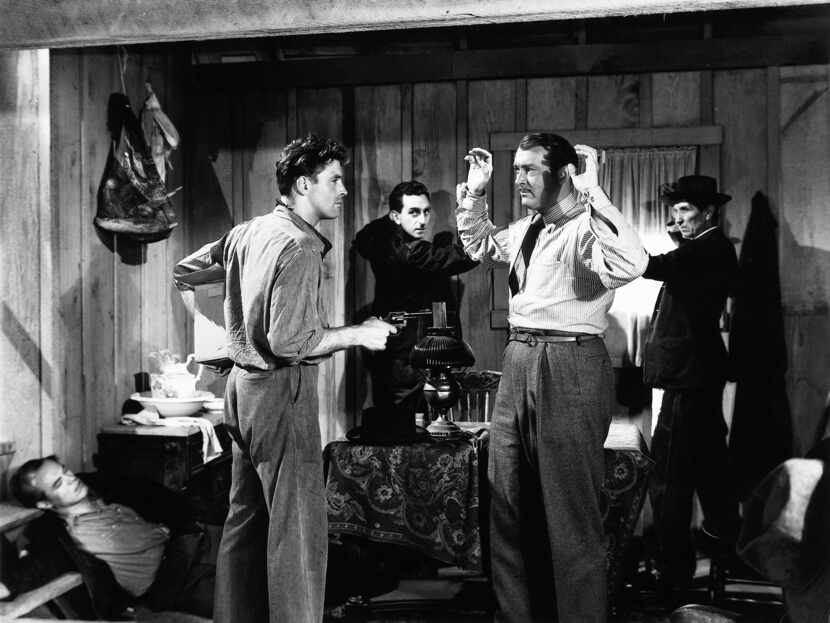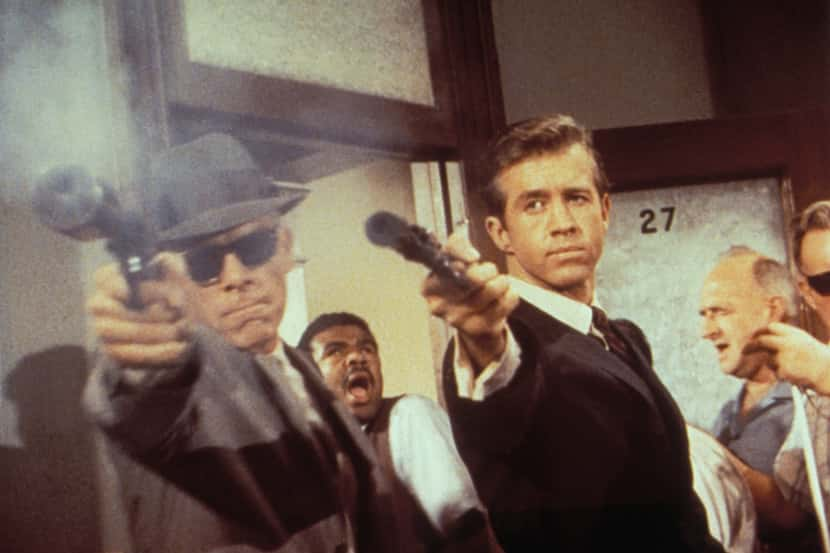Ernest Hemingway's "The Killers" is short even by short story standards, a compact literary bomb that ticks right to the edge of detonation. It's almost all dialogue, most of it delivered in the tight, staccato style that would make Hemingway the most imitated of writers. Somehow this early Hemingway gem was adapted into two feature-length movies that veer sharply from the source material and from each other. You can spend an evening doing a side-by-side study with the new Criterion Blu-ray set that includes both films.
The first, directed by noir master Robert Siodmak and released in 1946, stars a fresh-faced kid named Burt Lancaster (making his big screen debut) and boasts a plot as curvaceous as its femme fatale, Ava Gardner. The short story and most of its dialogue fits snugly into the film's opening sequence, in which two hoods (William McGraw and Robert Conrad) menace a small-town greasy spoon in search of The Swede (Lancaster). The Swede has done the wrong person wrong, and his visitors, as the title suggests, don't plan to let him live.

From these minimalist beginnings Siodmak's film morphs into a satisfying '40s crime yarn, laden with imaginative flashbacks and the themes of fatalism and betrayal that were already staples of film noir. The second Killers, directed for television by Don Siegel (Dirty Harry) and released in 1964, is a different animal entirely: Visually Flat, tawdry, sadistic, yet in some ways more Hemingway than the first movie.
Once again a pair of hit men (the snarling Lee Marvin and the goofy Clu Gulager) start things off by icing a fugitive. Where Hemingway's Swede (and Siodmak's) is a prizefighter, this version, played by John Cassavetes (taking a paycheck to finance one of his more personal films), races cars. Marvin and Gulager arrive to kill their mark at the school for the deaf where he now teaches. The victim doesn't try to escape, a detail that fills Marvin's philosophical killer with a sense of existential disquiet. You get the feeling Hemingway would have appreciated this touch. It's what leads the killers and the audience on a violent quest for explanations. Along the way they encounter Angie Dickinson and Ronald Reagan, who makes a fine, oily bad guy.
It's a not a particularly good movie, but it makes for a fascinating companion piece to the earlier, superior version. Together the films form an object lesson in how malleable the written word becomes en route to the screen.


/cloudfront-us-east-1.images.arcpublishing.com/dmn/CYCED6UYIJA3ZBD7OJ6PR27SIU.jpg)
/cloudfront-us-east-1.images.arcpublishing.com/dmn/F5S2YSWWSFDL5ETVPWMAR4IIMM.jpg)
/cloudfront-us-east-1.images.arcpublishing.com/dmn/XVPEQJX4SRGT7OSHUVAKN5FFGQ.jpg)
:no_upscale()/cloudfront-us-east-1.images.arcpublishing.com/dmn/FVNFZF773ZGBBIMFHTQJFFNT2Y.jpg)
/cloudfront-us-east-1.images.arcpublishing.com/dmn/D4FJ726DTR6SREKVO4SCKYKNEE.jpg)